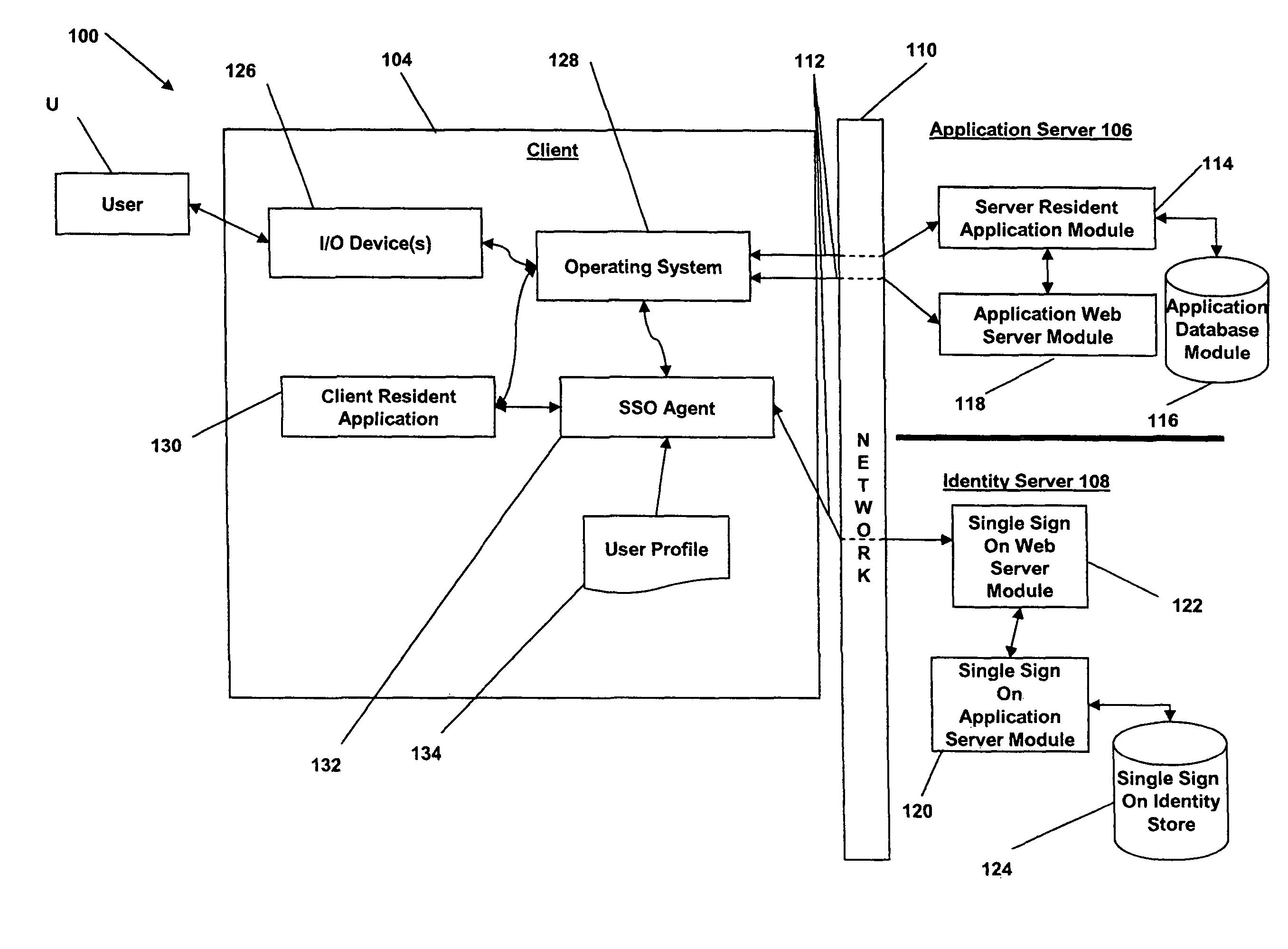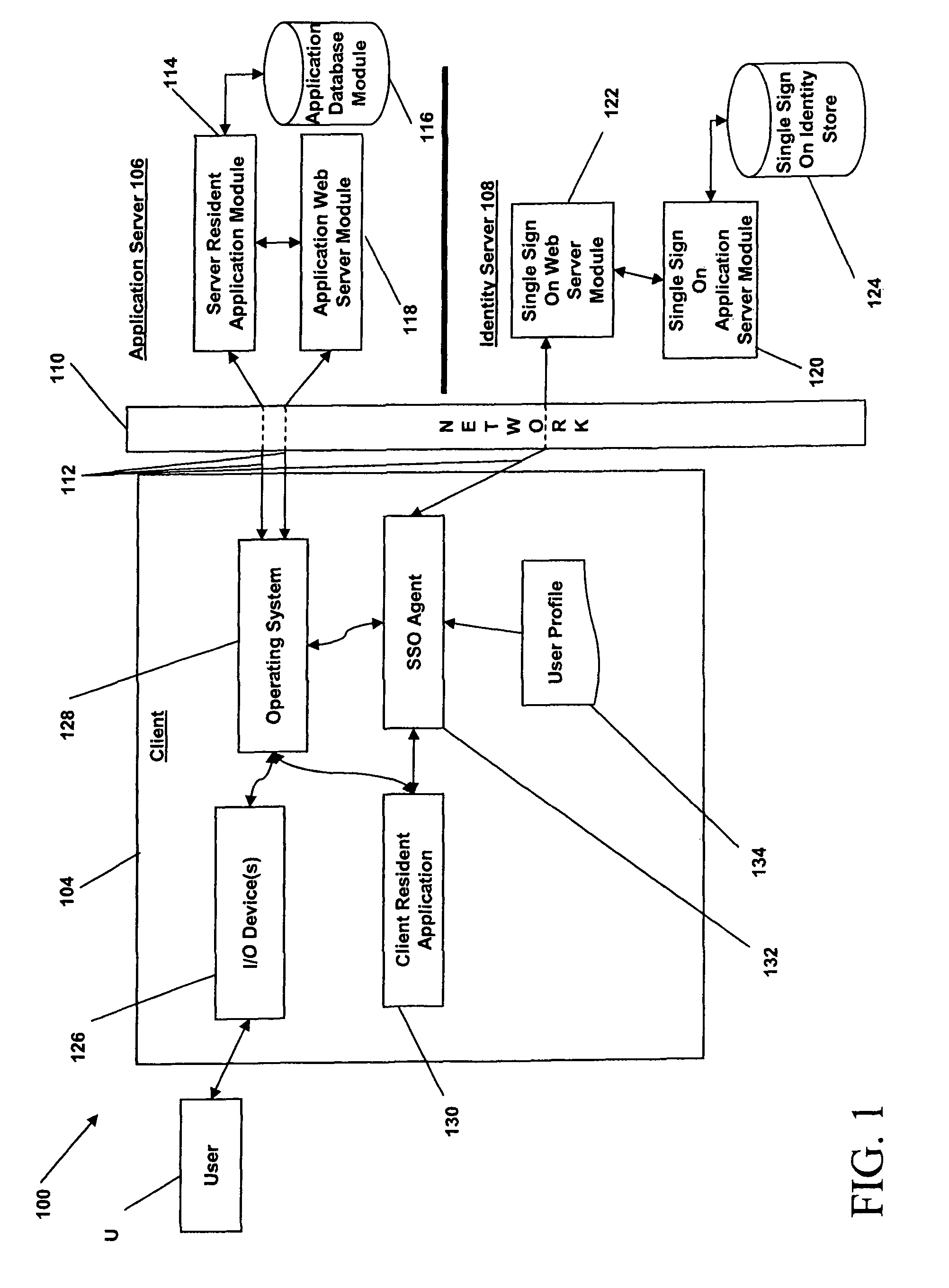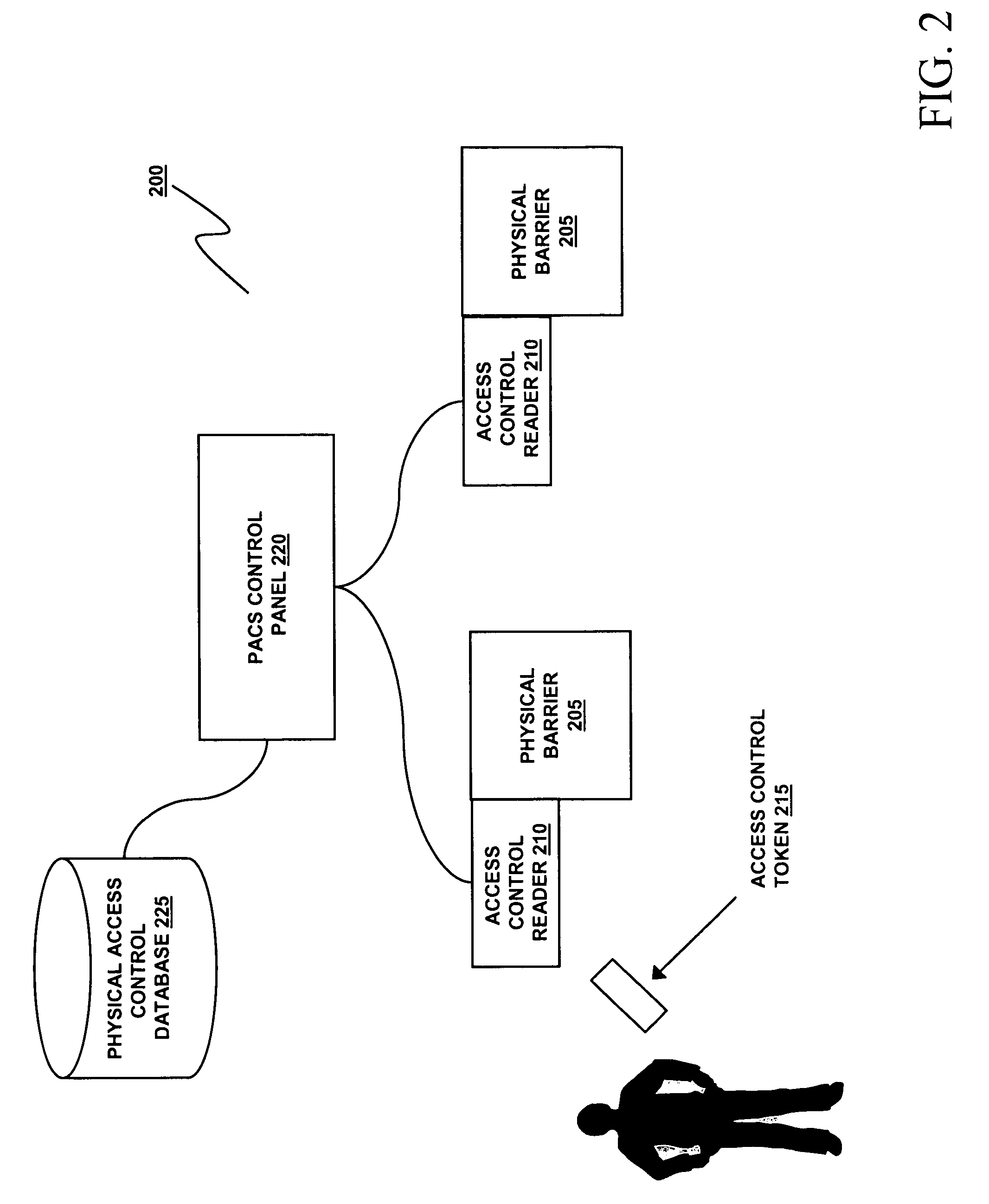Systems and methods for multi-factor authentication
a multi-factor authentication and multi-factor authentication technology, applied in the field of multi-factor authentication, can solve the problems of increasing the number of computer applications, requiring significant effort on the part of users, and adding significant costs to the ongoing maintenance of a secure information technology infrastructur
- Summary
- Abstract
- Description
- Claims
- Application Information
AI Technical Summary
Benefits of technology
Problems solved by technology
Method used
Image
Examples
Embodiment Construction
[0025]The present invention facilitates the inclusion of user and environmental state information from multiple access-control systems into a comprehensive access-control policy for access to logical and / or physical resources without the need for costly, time-consuming adaptations to currently deployed systems.
[0026]In broad overview, FIG. 1 illustrates an embodiment of a system 100 for automating user logon procedures, auditing user activity within one or more applications, and consolidating user authentication credentials in a central data store. The system 100 includes a first computing system (a “client”) 104, a second computing system (an “application server”) 106 and a third computing system (an “identity server” or “single-sign-on server”) 108, all in communication with each other via a network 110. The client node 104 is used by one or more users, indicated graphically at U. The client node 104, the application server 106 and the identity server 108 are in communication with...
PUM
 Login to View More
Login to View More Abstract
Description
Claims
Application Information
 Login to View More
Login to View More - R&D
- Intellectual Property
- Life Sciences
- Materials
- Tech Scout
- Unparalleled Data Quality
- Higher Quality Content
- 60% Fewer Hallucinations
Browse by: Latest US Patents, China's latest patents, Technical Efficacy Thesaurus, Application Domain, Technology Topic, Popular Technical Reports.
© 2025 PatSnap. All rights reserved.Legal|Privacy policy|Modern Slavery Act Transparency Statement|Sitemap|About US| Contact US: help@patsnap.com



